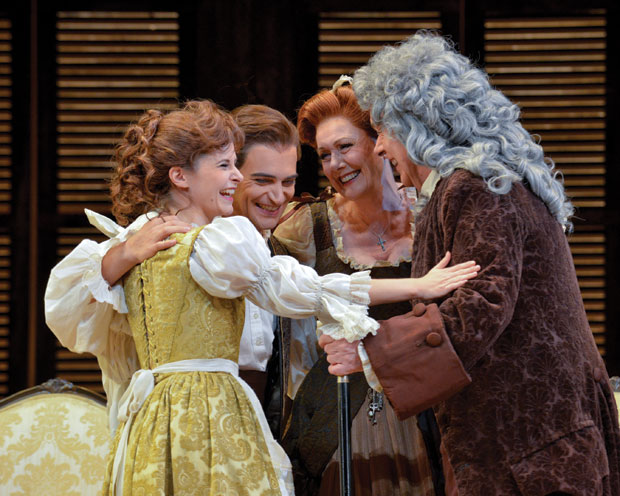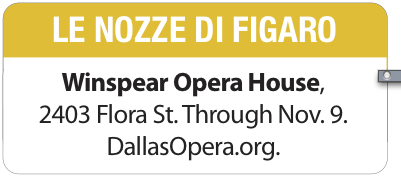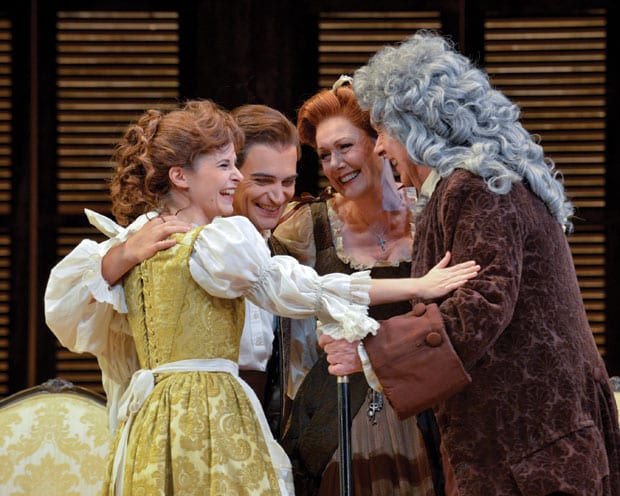Dallas Opera launches its season with Mozart’s delightfully tuneful ‘Figaro’

COMPLIMENTARY VALET | Figaro (Mirco Palazzi, center) conspired with his fiancee Susanna (Beate Ritter, left) to avoid the marriage to Marcellina (Diana Montague) orchestrated by Dr. Bartolo (Kevin Langan). (Photo courtesy Karen Almond, The Dallas Opera)
 Mozart’s operas are among the most bankable crowd-pleasers, and Le Nozze di Figaro (The Marriage of Figaro) is no exception. Based on the centerpiece of Beaumarchais’ Figaro Trilogy, Le Nozze has certainly the loveliest music throughout.
Mozart’s operas are among the most bankable crowd-pleasers, and Le Nozze di Figaro (The Marriage of Figaro) is no exception. Based on the centerpiece of Beaumarchais’ Figaro Trilogy, Le Nozze has certainly the loveliest music throughout.
The story brings back Figaro (baritone Mirco Palazzi, who’s excellent), the wily barber from Rossini’s The Barber of Seville (which closed out the Dallas Opera’s last season). Figaro is now valet to Count Almaviva (baritone Joshua Hopkins), who has his eye on Figaro’s fiancée Susanna (the fantastic soprano Beate Ritter), who is maid to the count’s wife (terrific soprano Nicole Car). Meanwhile, Dr. Bartolo (bass Kevin Langan) and his housekeeper Marcellina (soprano Diana Montague) are conspiring to have the Count force Figaro to marry the much-older Marcellina to settle some old debts. Several other amusing characters round out the cast, including a drunk gardener (bass Adam Lau) and a page (the delightful soprano Emily Fons in a “trousers role”) just discovering the excitement of love. The performances are uniformly solid and the ensemble singing is first rate.
Kevin Moriarty, the Dallas Theater Center artistic director, marks his second collaboration with The Dallas Opera; he tiptoed into opera in 2012 with the contemporary chamber opera The Lighthouse. While he now has far more characters to play with, Moriarty stays true to this beloved work and the result is a delightful romp through the many stages of love. The sets are detailed period interiors (from late production designer John Bury), though the garden setting of Act 4 is lackluster. Musical highlights include the lovelorn page Cherubino’s aria “Voi che sapete” as well as the gorgeous “Letter duet” between the Countess and Susanna.
Conducted by DO’s music director Emmanuel Villaume, the small orchestra and harpsichord serve the action onstage well. At times the work feels a bit languorous, and it is indeed a long opera (nearly four hours, though taking place over the course of one action-packed day). But it’s also a worthwhile endeavor.
— Alicia Chang
This article appeared in the Dallas Voice print edition October 31, 2014.

